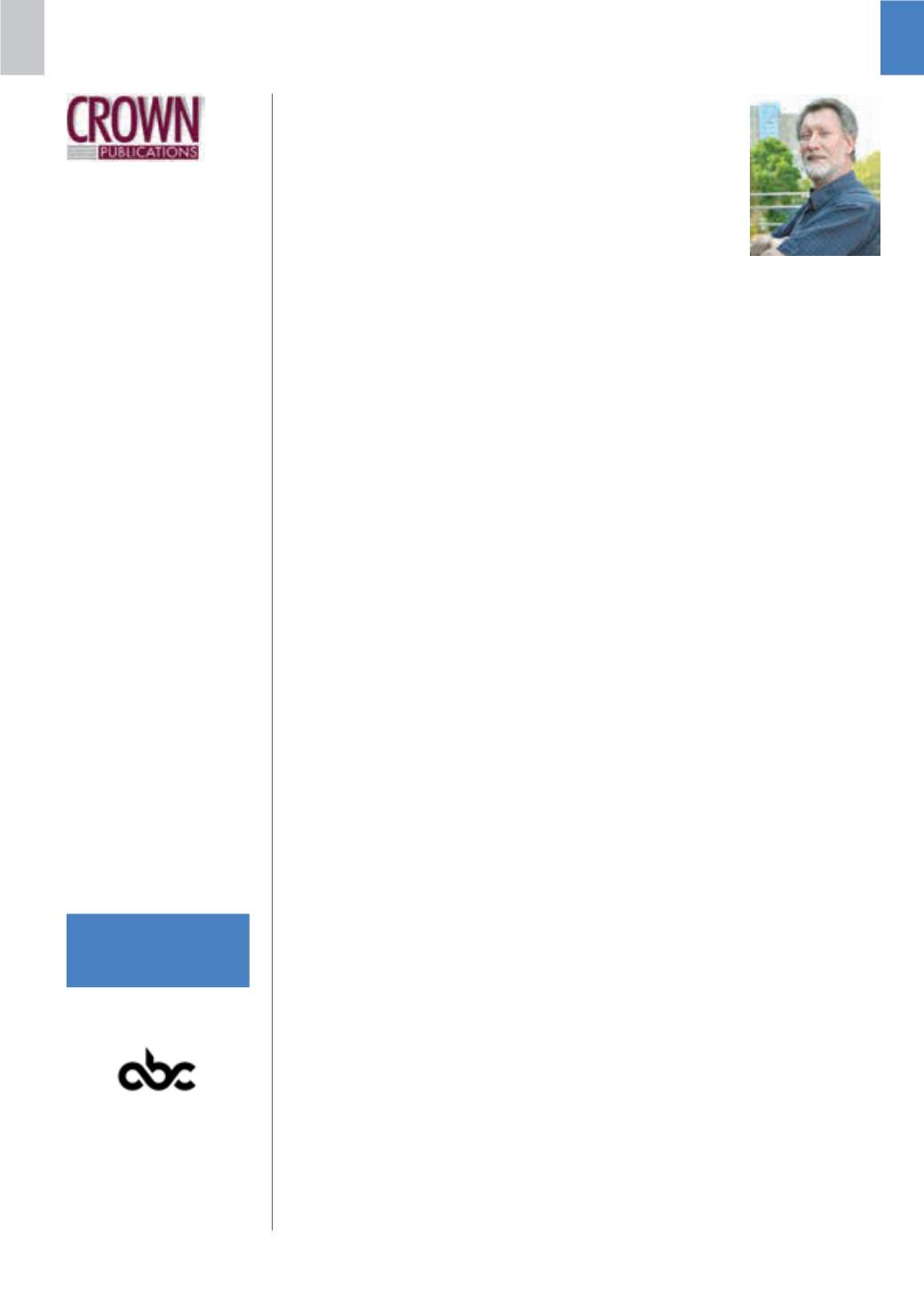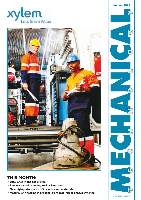

Mechanical Technology — January 2015
1
⎪
Comment
⎪
Published monthly by
Crown Publications cc
Crown House
Cnr Theunis and
Sovereign Streets
Bedford Gardens 2007
PO Box 140
Bedfordview 2008
Tel:
+27 11 622 4770
Fax:
+27 11 615 6108
e-mail:
mechanical@crown.co.zaEditor:
Peter Middleton
Copy editor:
Erika van Zyl
Advertising:
Norman Welthagen
e-mail:
normanw@crown.co.zaDesign & layout:
Darryl James
Publisher:
Karen Grant
Director:
Jenny Warwick
Circulation:
Karen Smith
Reader enquiries:
Radha Naidoo
Transparency You Can See
Average circulation
(July–September 2014)
3 725
The views expressed in this
journal are not necessarily
those of the publisher or
the editor.
Printed by:
Tandym Print – Cape Town
www.crown.co.za‘Matric’ results and career success
E
very year, I get irritated by the frenzy created by the release of the
‘matric’ exam results. It has become part of the post-Christmas holi-
day routine for the media to seek out the smiling students celebrating
their (unexpected) success, those that have triumphed over adversity
to scrape through and, on the opposite extreme, those unhappy souls that
have had their bright futures derailed. The personal success/failure stories
are not really the root cause of my irritation, though. What I resent most is
the notion that this exam, with all its frailties, is lauded by so many as the
key indicator of career success.
Officially, ‘matric’ no longer exists. The school leaving qualification awarded to students suc-
cessfully completing Grade 12 in South Africa is called the National Senior Certificate (NSC). The
term ‘matric’ comes from the wording that used to be used on NSC certificates ‘Matriculation
endorsement’, which certified that the candidate had fulfilled the minimum requirements for entry
into a South African university – and the word ‘matriculation’ is defined as ‘the formal process of
becoming eligible to enter a university’.
But only a minority of students, in any country of the world, actually progress to university
level education. The Stats SA’s 2013 General Household Survey (GHS) found that the percentage
of people aged 18 to 29 attending university by population group was at 3.2% for black people,
3.1% for so called coloured people, 18.7% for whites and 9.2% for people of Asian origin. While
this clearly indicates a slow rate of transformation in our society, it should also send a loud and
clear message that ‘matric’ as a university entrance examination is an inappropriate measure of
success for the majority of our integrated population.
The NSC splits the certification requirements into four levels: Bachelor’s, Diploma, Higher
Certificate and Basic. The Bachelors level represents the traditional university entrance require-
ments. To receive a ‘Bachelors certificate’, students must achieve 50% or more in four subjects
with at least 30% in all remaining subjects and more than 40% in their home language. Only
about 28% of those who wrote the 2014 NSC exams (150 752 students) achieved at this level.
And, since these are merely ‘minimum requirements’ almost all universities are now imposing
additional entry requirements and/or examinations for students, depending on the specific career
being pursued.
At the opposite end of the spectrum are the minimum requirements for a ‘basic’ NSC certificate,
which are 40% in three subjects, one of which should be a home language and 30% in three
other subjects. The national 75.8% pass rate quoted by media and politicians is based on this
‘basic’ level and, of the 532 860 Grade 12 students who wrote the ‘matric exam’ as full-time
candidates in 2014, 128 986 failed to achieve this level.
The true value of this basic certificate is also unclear. The entry requirements for Nelson Mandela
Metropolitan University (NMMU) point towards statutory minimum requirements as follows:
• For Higher certificate courses: 40% in the language of teaching and learning (LOTL), either
home language or first additional language; 30% in either maths or maths literacy; 40% in
life orientation; and 50% in the four other vocational subjects
• For Diploma courses: 50% in three fundamental subjects including LOTL and 60% in four
compulsory vocational modules.
• For Bachelor’s degrees: 60% in three fundamental subjects including LOTL and 70% in four
compulsory vocational modules.
A basic NSC certificate, therefore, fails to meet any of these ‘statutory’ entry requirements for
further education.
For these and other reasons, Jonathan Jansen, vice-chancellor and rector of the University of
the Free State says “I would seriously consider not sending my child to school in South Africa”
and would “worry myself senseless when I enrol my child in Grade 1 knowing that she could
be among the more than half-a-million children who would not make it through to Grade 12.”
In terms of advice for university candidates, he says: “If your average mark in the NSC is
below 70%, you should consider not going to university and, if you do, be prepared to work very,
very hard.”
Having discarded outcomes-based education, we seem determined to popularise the ‘gate-
keeping’ system from our past. While we need more and better university graduates, and our
education system must be able to feed such candidates into tertiary institutions, alternative
pathways for those unsuited to academic study are also essential.
By over focusing on ‘matric’ we are losing sight of the need for work-ready school leavers and
the annual frenzy is perpetuating educational poverty for the majority of our youngsters.
Peter Middleton

















